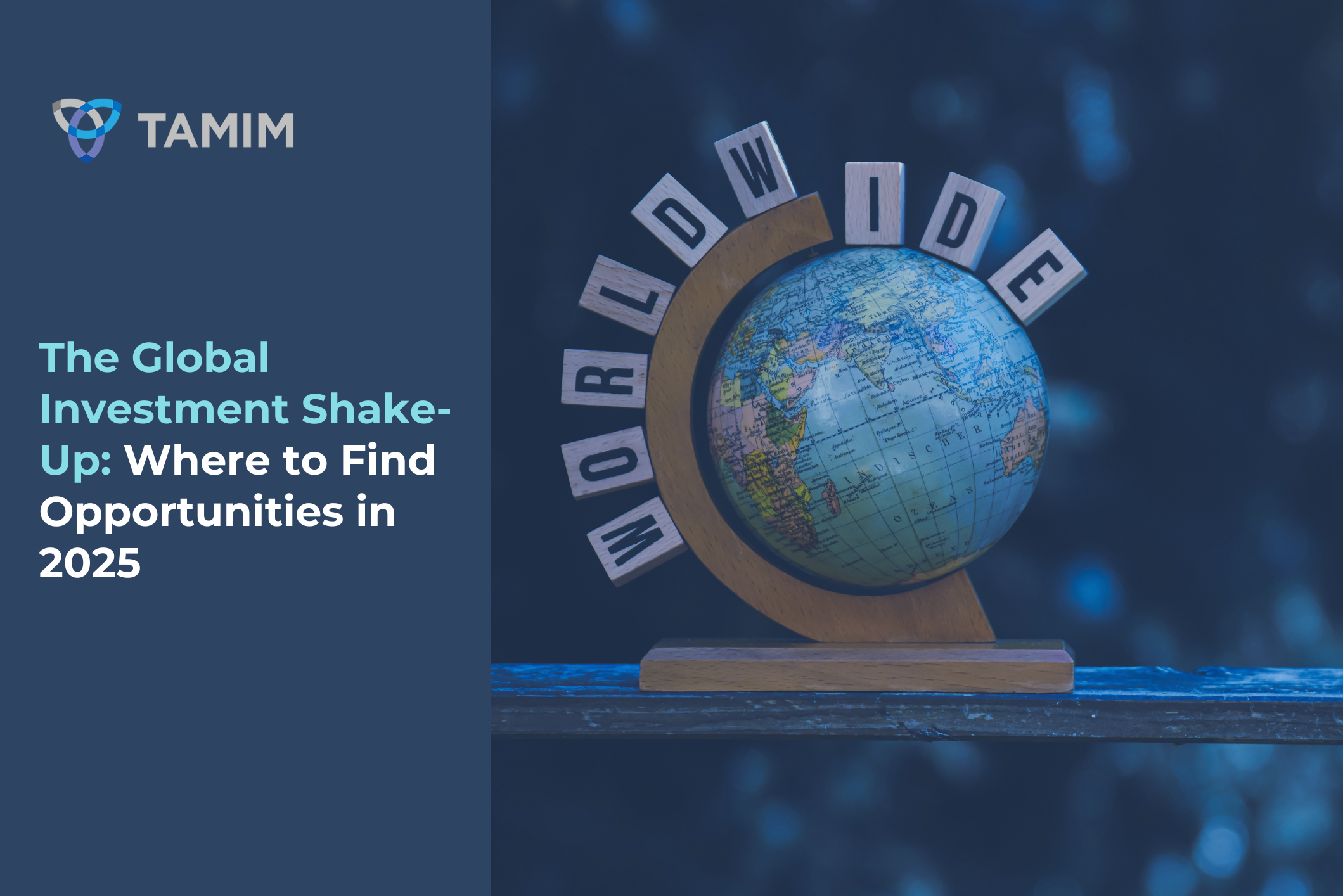Navigating the Market’s Shifting Landscape
The world is shifting under our feet. Global markets are being reshaped by technological advancements, economic realignments, and geopolitical shifts that demand a new approach to investing.
As investors, it is no longer enough to simply track historical trends or rely on the same old blue-chip strategies, we must look forward. The key to success in 2025 and beyond is identifying long-term structural trends and positioning accordingly.
In my latest investment presentation, I outlined a global roadmap for navigating this new environment. The short version? The world is changing, and investors must adapt.
The Global Economic Pivot: A Market in Flux
I often say that “the world is being turned upside down,” and I mean it. This is not hyperbole, it’s a reflection of fundamental changes in how economies function, how industries operate, and where capital flows.
While equities remain the preferred asset class, the real challenge is knowing which ones to own. Investors need to go beyond the headlines and dig deeper into valuation, resilience, and sectoral positioning.
The U.S. Market: The Mega-Cap Illusion
Many investors remain captivated by a handful of mega-cap technology stocks in the United States. These companies dominant as they may be now trade at valuations that are, frankly, difficult to justify.
- The top seven mega-caps in the U.S. market now account for an outsized share of market capitalisation, creating a distorted investment landscape.
- These stocks trade at 30 times earnings, compared to just 16 times earnings for small and mid-cap companies.
I see much better value in smaller-cap stocks. The S&P 600 Index of smaller companies provides a more reasonable entry point, with businesses that have adapted to economic pressures and are better positioned for resilience.
Reindustrialisation: America’s Next Big Investment Theme
One of the biggest themes for the decade ahead is reindustrialisation, the process of bringing manufacturing and supply chains back to American shores.
This is not just political rhetoric; it is an economic reality.
- Infrastructure investment is essential. The American Society of Civil Engineers has given U.S. infrastructure a failing grade – this must change
- Manufacturing is being reshaped, and companies involved in industrial automation, logistics, and materials science stand to benefit
- Supply chain resilience is now a corporate priority, creating new demand for domestic production capabilities.
This movement presents a once-in-a-generation investment opportunity, particularly in sectors that support domestic production and industrial transformation.
The AI and Energy Nexus: The Next Critical Shift
Much has been written about AI’s potential, but one overlooked consequence is its massive energy consumption.
- Artificial intelligence models require enormous processing power, which in turn demands significantly more electricity.
- Energy grids will need upgrading, and those who control energy infrastructure stand to gain.
Where are the opportunities?
- Power generation companies that can meet surging electricity demand
- Grid infrastructure providers upgrading systems for efficiency
- Nuclear energy resurgence, as plants extend their lifespans to accommodate AI-driven power need
- Renewable energy and traditional energy sources integrating to support a sustainable future
This isn’t speculation – it’s a necessity. Data centers, cloud computing, and AI workloads will drive the next wave of energy investment.
Japan: The Overlooked Gem in Global Markets
One of the most underappreciated investment stories today is Japan.
- Japanese companies have historically underperformed due to poor corporate governance.
- But now, things are changing companies are becoming more shareholder-friendly, boosting dividends and share buybacks.
- At the same time, Japan is home to some of the world’s most technologically advanced companies.
For investors willing to look beyond the usual suspects, Japan presents a compelling valuation opportunity.
The China Factor: Mutual Dependency, Not Decoupling
While many analysts continue to discuss “decoupling” from China, the reality is far more complex.
- China remains deeply entrenched in global supply chains.
- The U.S. and China are economically interdependent, whether policymakers admit it or not.
Instead of a total separation, I expect a future of “mutually agreed dependency.” While political rhetoric may suggest otherwise, the economic reality means trade will continue just under different terms.
Europe: Defense and Infrastructure in Focus
Europe often flies under the radar, but investment opportunities exist, particularly in:
- Defense spending, as nations reassess military budgets in response to geopolitical tensions.
- Infrastructure investment, as European governments allocate funds to modernisation.
While growth in Europe remains sluggish, targeted investments in these sectors could yield strong returns.
Investment Playbook for 2025
Given this backdrop, where should investors focus?
- Look beyond mega-cap tech stocks. The best opportunities are in smaller, more reasonably valued companies.
- Reindustrialisation is real. Companies involved in infrastructure, manufacturing, and logistics will benefit.
- Energy is undergoing a transformation. AI-driven demand will push investment into power grids and energy production.
- Japan is an underappreciated market. Improving governance and attractive valuations make it worth considering.
- China remains an economic force. The West may reduce reliance, but full decoupling is unrealistic.
The Tamim Takeaway
The investment landscape in 2025 is undergoing a profound transformation, and investors who fail to adapt will find themselves on the wrong side of history.
- U.S. markets remain strong, but investors should seek value beyond the overvalued mega-caps.
- AI’s rise will drive unprecedented energy demand, making power infrastructure a key investment theme.
- Japan is one of the most attractive, yet ignored, opportunities in global markets.
- China remains deeply interconnected with global markets, making a full economic break unlikely.
- Europe’s defense and infrastructure investments will provide new openings for investors.
As we move through 2025, the best investors will be those who embrace change, seek value in underappreciated markets, and stay ahead of long-term structural shifts.
At TAMIM, we remain committed to spotting these emerging trends early and investing with conviction.
The world is changing – make sure your portfolio is changing with it.

